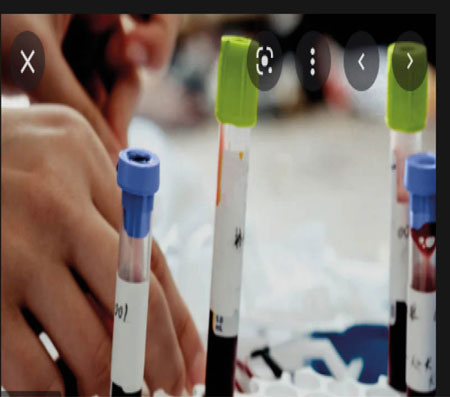A large-scale international study shows that a new blood test can accurately detect markers of Alzheimer’s disease. Pansfun Images/Stocksy Brain imaging and spinal fluid tests are two of the most common ways scientists detect early signs of Alzheimer’s disease [AD] in people. However, some of these tests are expensive, invasive, and not routinely available to the millions of individuals who may be at risk of this neurodegenerative condition.
Now, a blood test developed by researchers at Washington University School of Medicine, St. Louis, has shown promising results in detecting the early signs of AD. Randall Bateman, M.D. — the Charles F. and Joanne Knight Distinguished Professor of Neurology — and colleagues set out to determine the diagnostic accuracy of a new blood test for detecting early signs of AD.
AD occurs due to the accumulation of beta-amyloidTrusted Source, a protein that clumps together to form “sticky” plaques on the brain.
These plaques affect the transmission of brain cell signals and may result in the death of brain cells, leading to symptoms of AD. These symptoms include memory loss, mood changes, and difficulties with speech. Two of the most problematic proteins are beta-amyloid 40 and beta-amyloid 42 because health experts believe they contribute the most to the creation of sticky plaque.
The new study, which appears in the journal Neurology, started with a basic question about beta-amyloid production, its clearance in people, and why amyloid plaques develop as individuals get older and develop AD. “We launched our study to measure that amyloid-beta 42 is specifically impaired in its clearance out of the brain and central nervous system,” senior study author Dr. Bateman explained to Medical News Today.
They then looked at the formation of beta-amyloid 42 and how it traveled from the brain into the blood.
“[W]e tracked how amyloid-beta is removed from the [central nervous system (CNS)], showing ~50% is removed across the blood-brain barrier to the blood,” he added.
This then led to the discovery that looking at the ratio of amyloid-beta 42 and amyloid-beta 40 could identify whether or not somebody was forming amyloid plaques on their brain. “From this discovery,” he added, “we sought to test and validate [our findings] in several large national Alzheimer’s disease studies.










